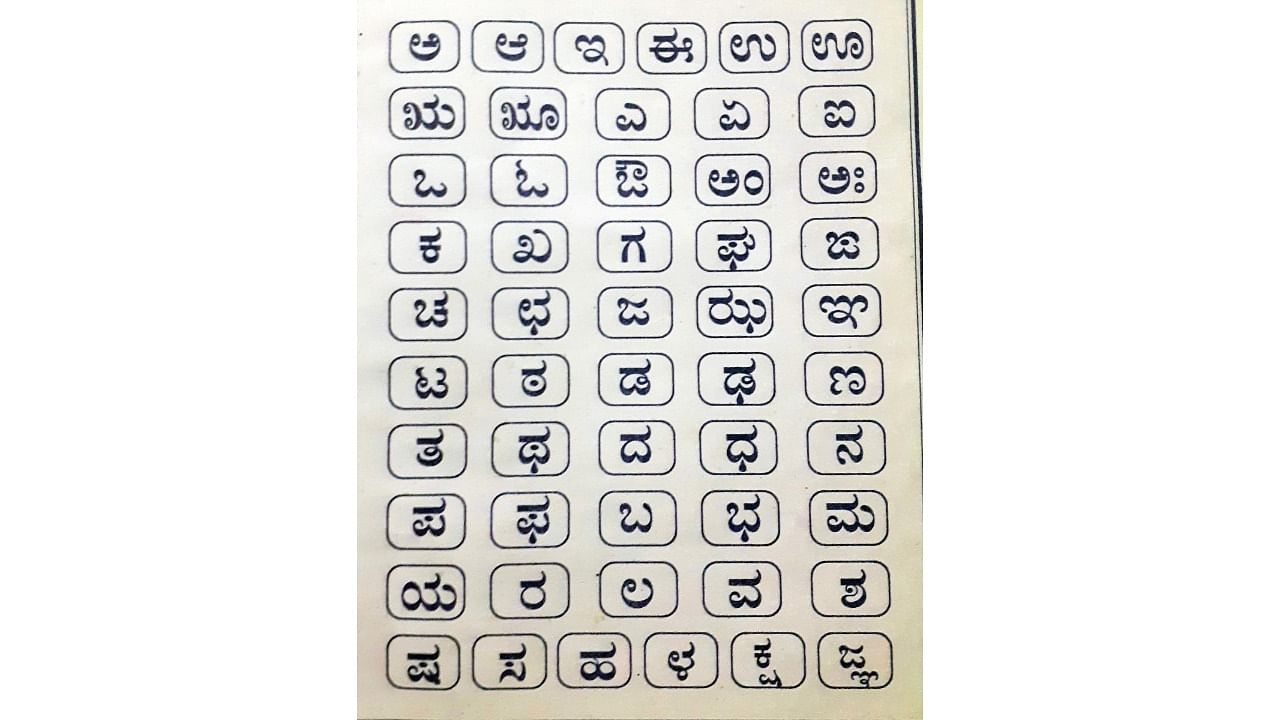
The written form of a language has spelling problems if there is discrepancy between writing and reading. The written form of English, for example, has a big spelling problem: There is no difference in reading between words like know and no. The vowels ‘i’, ‘u’, and ‘o’ occurring in the words like bird, curd and word are all read with the same vowel. The consonant ‘b’ occurring in words like doubt, debt, climb, and thumb is not pronounced while reading them, and so on.
Kannada does not have any such spelling problem as far as its own words are concerned. They are read as they are written. The reason for this is that, the Kannada writers have been changing the letters that are used for writing these words, as their pronunciation got altered. For example, when the pronunciation of the letter ‘p’ was changed to ‘h’ in speech, as in the words for milk (paalu=haalu), fruit (pannu=hannu), village (palli=halli), etc., its writing was also changed to ‘h’. Similarly, when the distinction between pairs of words like eḷe (tender) and eḻe (pull) of Old Kannada was lost in their pronunciation, the use of two different lateral letters, ḷ and ḻ for writing them was also given up.
However, in the written form of modern Kannada, words that are borrowed from Sanskrit are not written as they are pronounced or read by most of the Kannada speakers, but as they are written in Sanskrit. This has given rise to a spelling problem in written Kannada. While we need only about 31 letters for writing Kannada’s own words, we need an additional 20 letters in order to write Sanskrit loanwords as they are written in Sanskrit.
An attempt to change the writing of Sanskrit loanwords in order to make them suitable to Kannada was made by many Old Kannada writers. Instead of writing them as they are written in Sanskrit, they have either changed them into what is called tadbhava words, or have borrowed them from Prakrit, which has also made many such changes. For example, they have changed aspirated consonants to un-aspirated ones in the case of many words like samkale, samga, maṭa, kate, kapa, bakti, etc. Instead of using three different sibilants, namely s, ś and ṣ, they have used only one sibilant, namely ‘s’, in Sanskrit loanwords, since Old Kannada had only one sibilant. The Sanskrit vowel ‘ṛ’ was changed to ‘ri’ or ‘ru’. Some of the consonant clusters that occurred in Sanskrit loanwords, but did not occur in Old Kannada, were also changed as in words like dani (dhvani), baṭṭa (bhraṣṭa), ganta (grantha) etc.
One of the Old Kannada writers, Andayya, has tried to use only such altered (tadbhava) words in his writings.
However, Modern Kannada writers have retained very few of these tadbhava words (like kate or sakkare), but have replaced most of them by Sanskrit (tatsama) words. They have also made a rule that all Sanskrit loanwords must be written in Kannada as they are written in Sanskrit. As a result, we have now lost the freedom that the Old Kannada writers had, namely of altering the Sanskrit loanwords in order to adjust them to our pronunciation. For example, if we now change the word mukhya to its tadbhava form, namely mukya, it would be regarded as an error.
What I am suggesting, therefore, is that the Kannada writers must get back the freedom the Old Kannada writers had, namely to write Sanskrit loanwords either as they are written in Sanskrit, or in their tadbhava form, i.e., as they are pronounced. If, following Andayya, we consistently apply this freedom to our writing of Sanskrit loanwords, we would need only about 31 letters for our Kannada writing.
This would also remove one big problem that our children face while learning to read Kannada. We can use only the tadbhava forms of Sanskrit loanwords in their textbooks, so that they would need to learn only 31 letters instead of 50 or more in the first standard. They can, of course, learn additional letters later on, as they now learn two additional letters for reading Old Kannada texts.